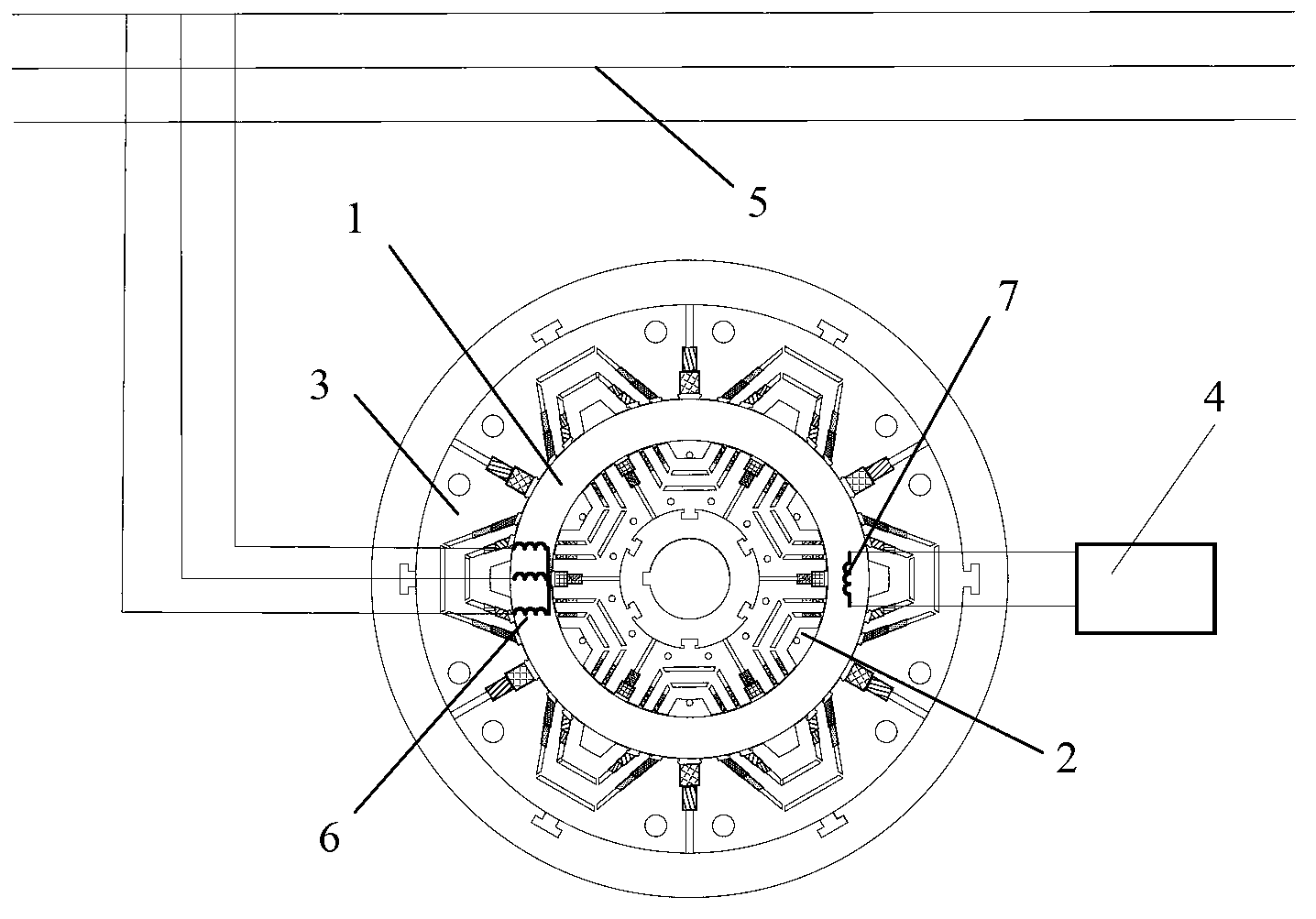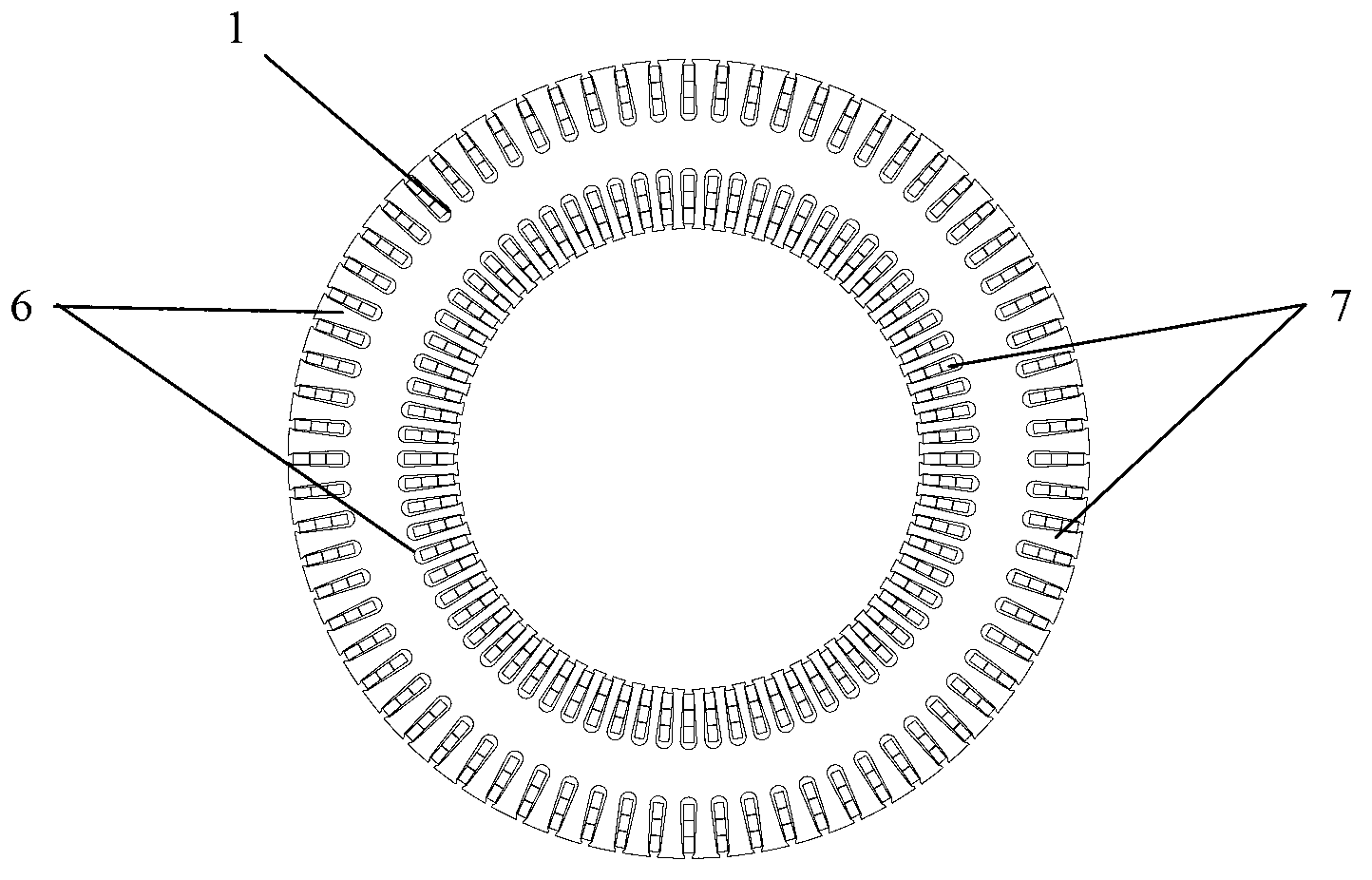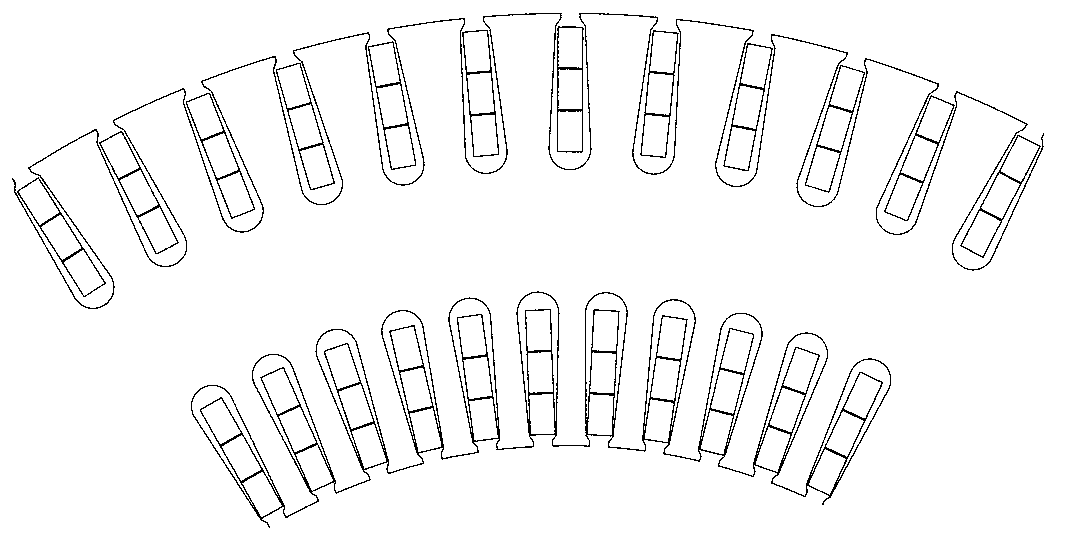Stator self-excitation synchronous motor with double cage barrier rotors and control method thereof
A synchronous motor, self-excitation technology, applied in electronic commutation motor control, synchronous motors for single-phase current, synchronous generators, etc., can solve uncertain parameter changes and large disturbance effects, large stator double-winding AC Difficult motor application, complex manufacturing process and other issues
- Summary
- Abstract
- Description
- Claims
- Application Information
AI Technical Summary
Problems solved by technology
Method used
Image
Examples
Embodiment Construction
[0073] The present invention is described in detail below in conjunction with accompanying drawing:
[0074] figure 1 It is a schematic structural diagram of a stator self-excited synchronous motor system with a double-cage barrier rotor in the present invention. The system mainly includes a stator 1, an inner rotor 2, an outer rotor 3, and a controllable DC power supply 4. The inner rotor 2 and the outer rotor 3 are respectively located in the stator 1 The two rotors are coaxially connected together by flanges on both sides of the inner and outer sides of the stator 1. The three-phase symmetrical armature winding 6 with 2p poles and the three-phase symmetrical excitation winding 7 with 2q poles are placed on the inner and outer sides of the stator 1, and the armature winding The number of poles of 6 and the number of poles of the field winding 7 can also be interchanged, but they all satisfy 2p-2q≥4, which can maximize the electromagnetic coupling of two sets of windings with...
PUM
 Login to View More
Login to View More Abstract
Description
Claims
Application Information
 Login to View More
Login to View More - R&D
- Intellectual Property
- Life Sciences
- Materials
- Tech Scout
- Unparalleled Data Quality
- Higher Quality Content
- 60% Fewer Hallucinations
Browse by: Latest US Patents, China's latest patents, Technical Efficacy Thesaurus, Application Domain, Technology Topic, Popular Technical Reports.
© 2025 PatSnap. All rights reserved.Legal|Privacy policy|Modern Slavery Act Transparency Statement|Sitemap|About US| Contact US: help@patsnap.com



